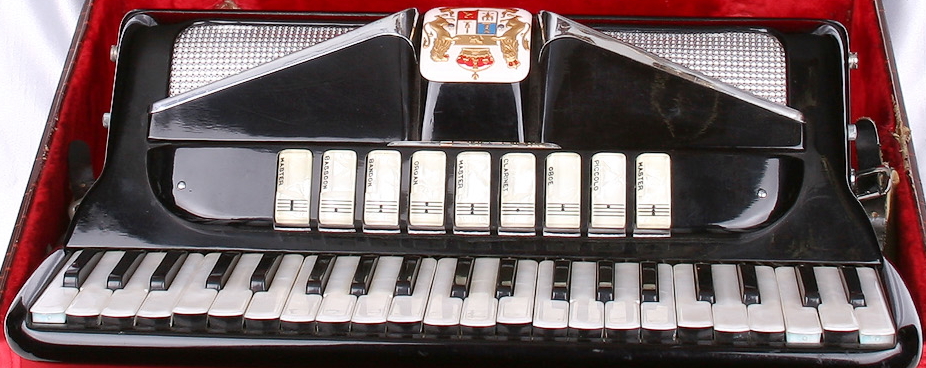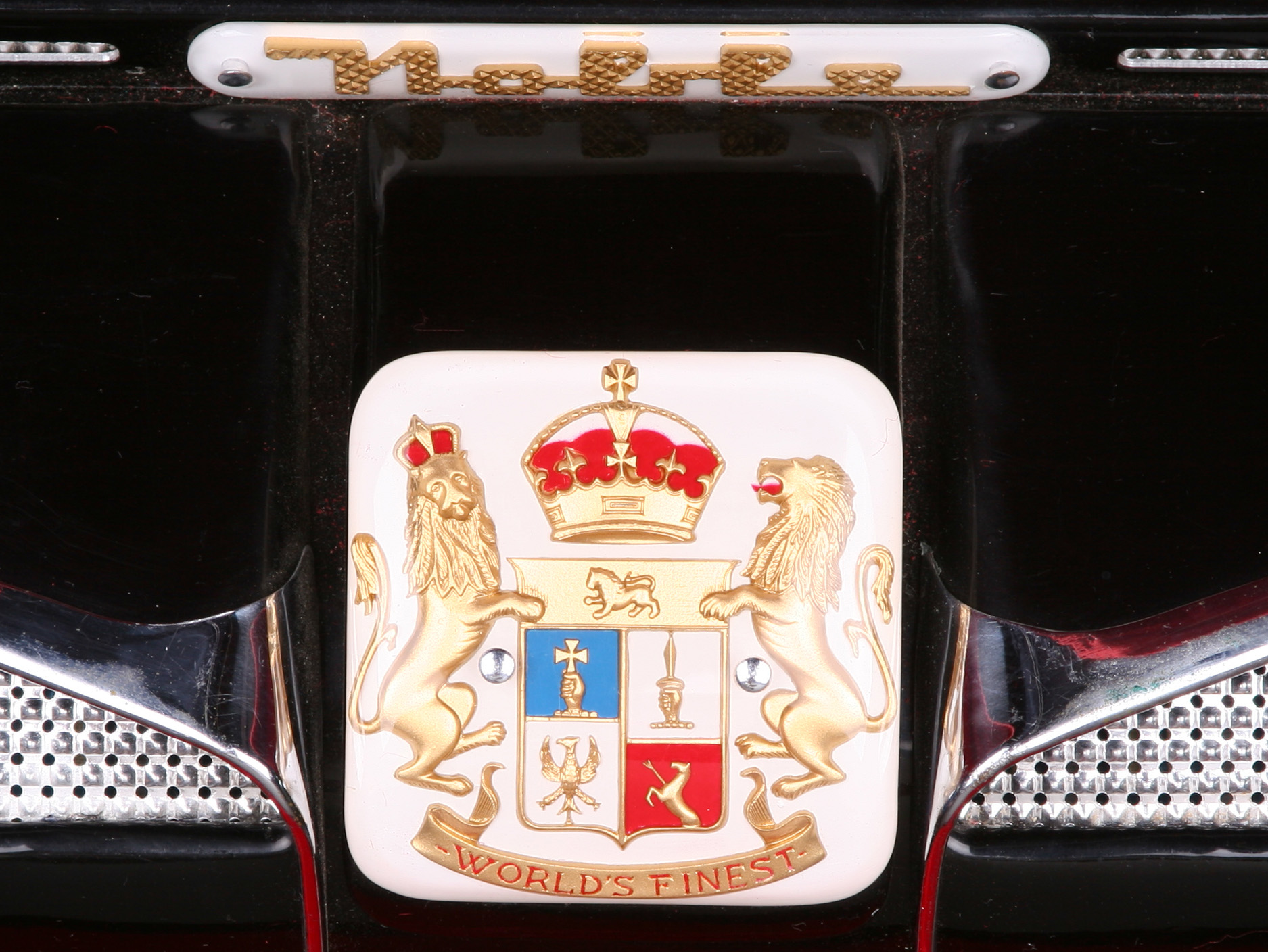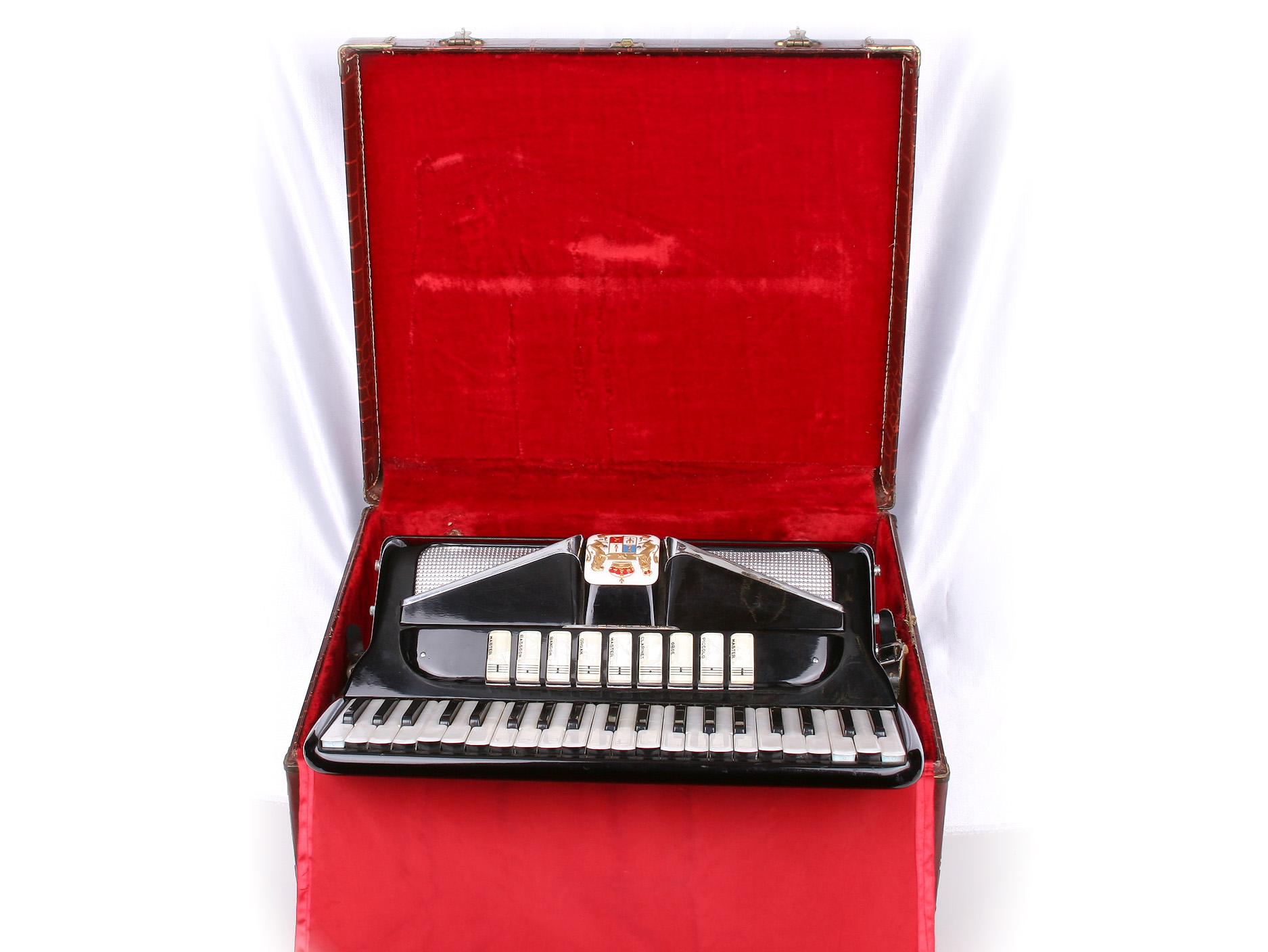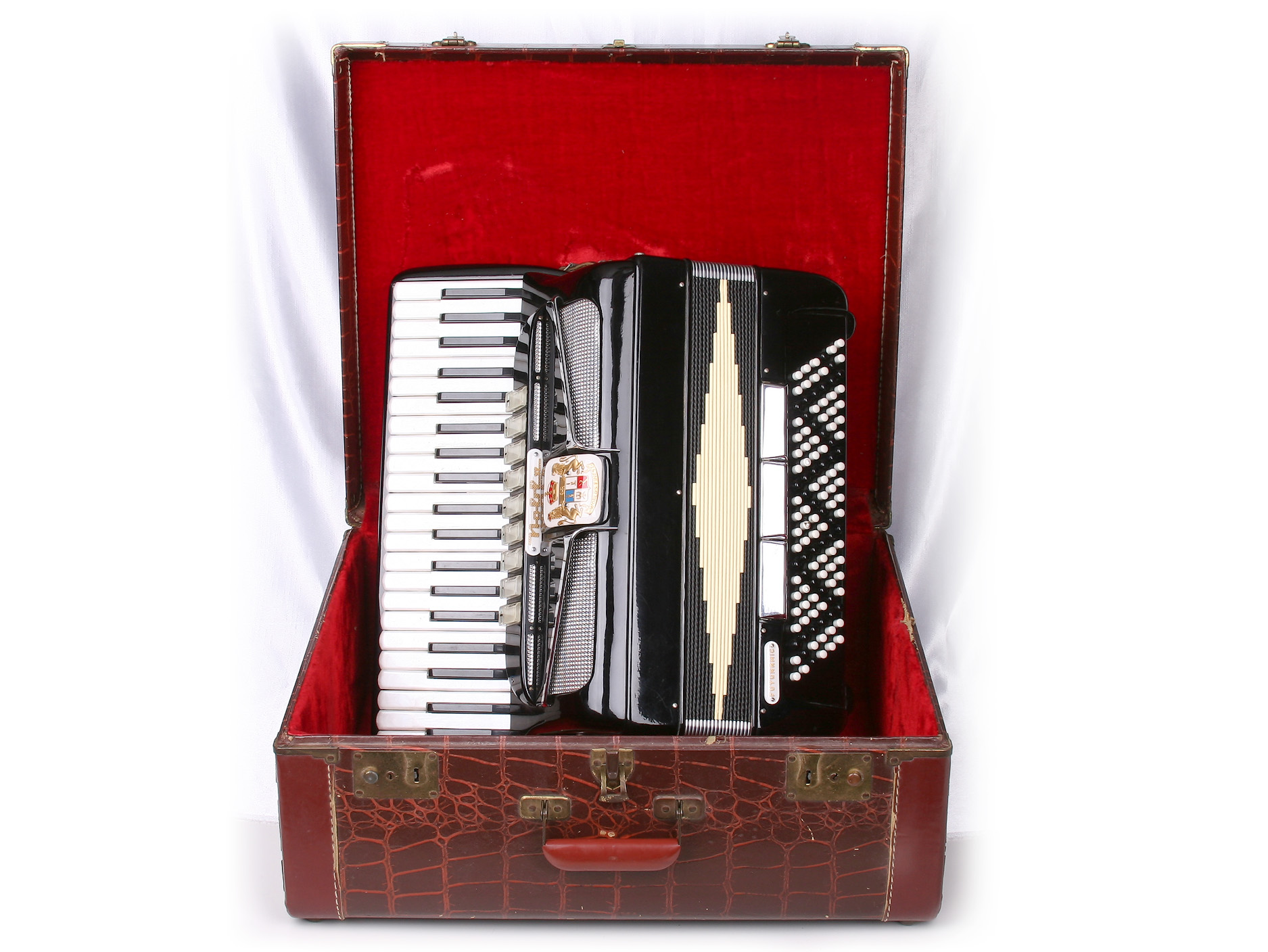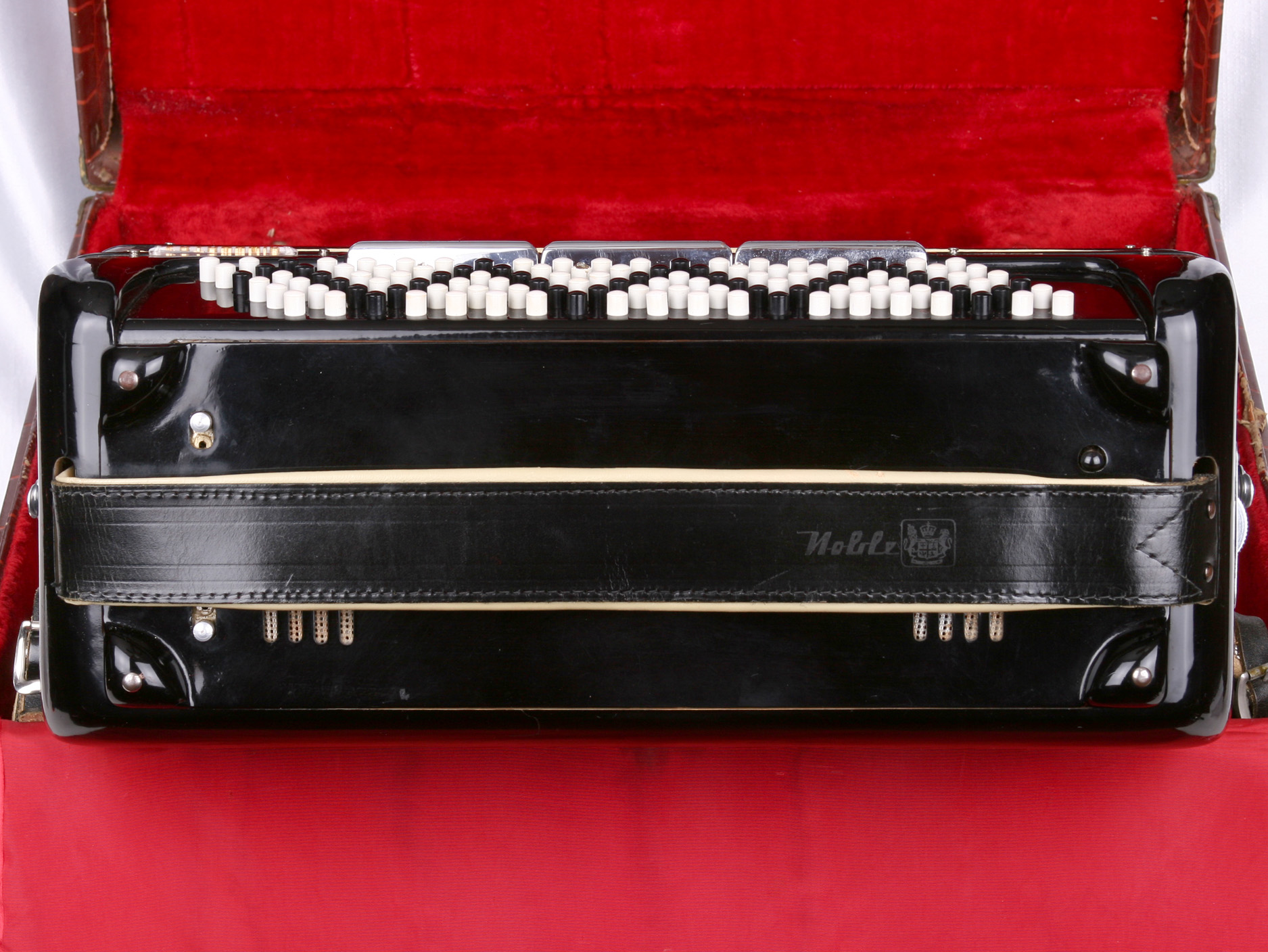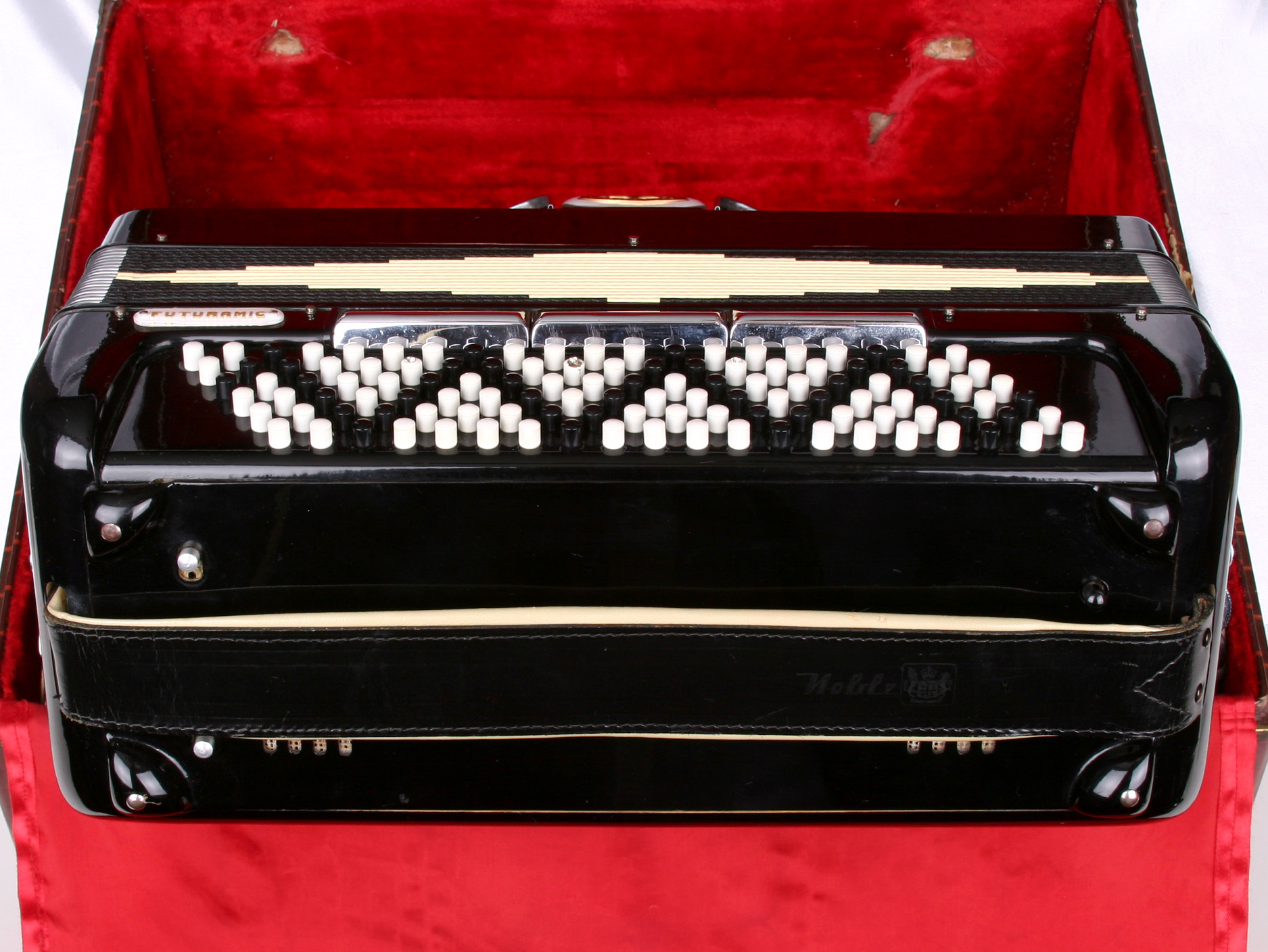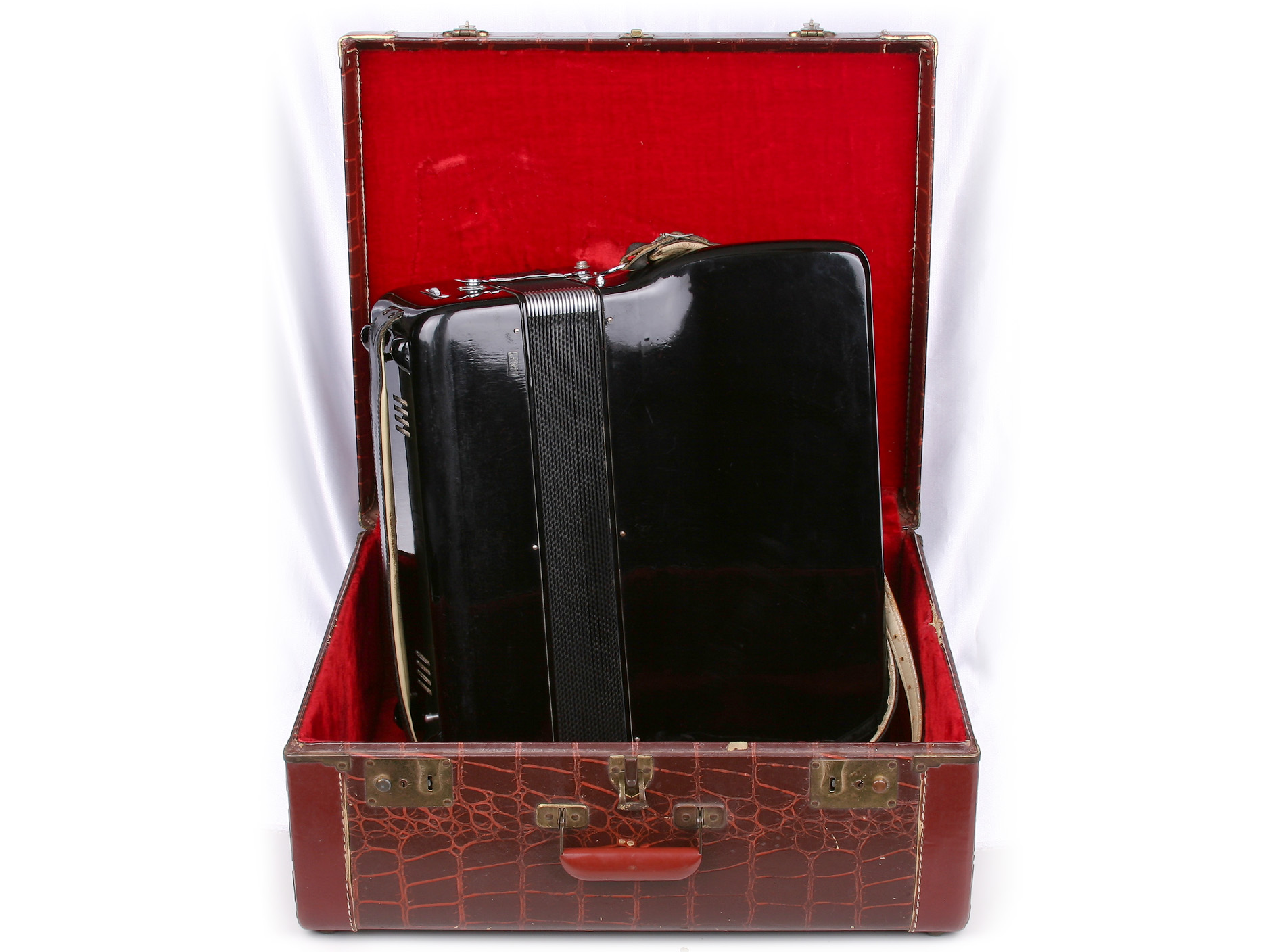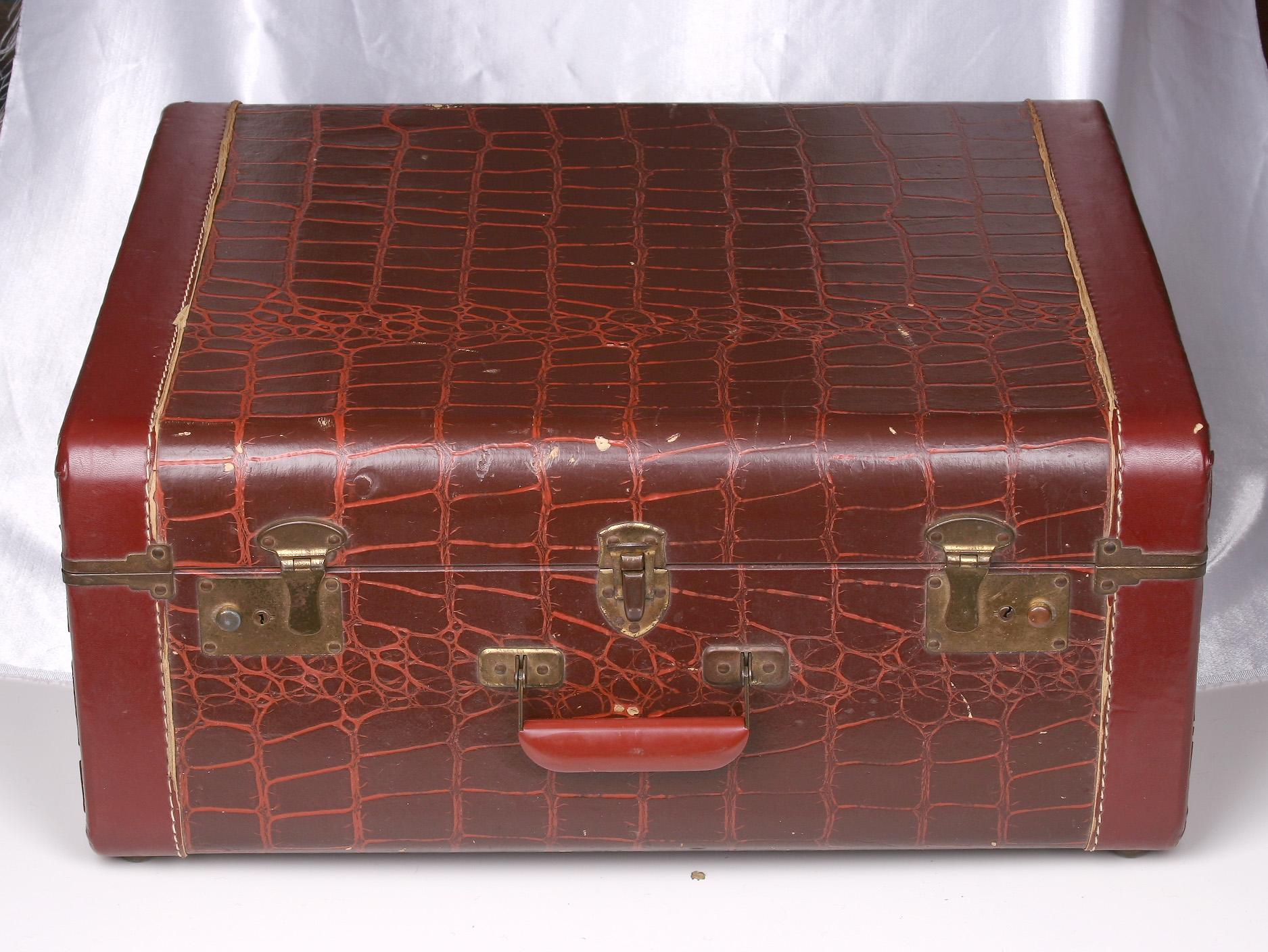"How To Play The Accordion"
"Danny Piano Chesnut Noble Futuramic Accordion Photos Below"
(Click On Photos Below To Open Large Full Hi Resolution Photos)
"Accordion Instruction &
Suggestions Below Compiled by Jeroen Nijhof."
Get a Teacher
If at all possible, get a teacher. A teacher can motivate you, and can nip bad habits in the bud. Look at the Accordion Yellow Pages under 'teachers' or 'schools'; there might be one near you. If not, hopefully the crash course below is enough to get you started. It is meant for the piano accordion; that is the instrument I play.
Whatever sounds good to you...
All advice given below is just that: advice. If something else sounds better to you, or works better for you, don't let me stop you. But especially when the fingering is concerned, be careful not to develop bad habits.
If you can't read music at all Gary Ewer's "Easy Music Theory might help. You don't have to know a lot about sheet music, quite a few people play by ear only. But on paper or on the screen the "dots" are a very efficient way of communicating music. And if you know how to read sheet music even a little, that opens up a wealth of material!
The Basses
Layout
![[72 bass stradella]](stradella72.gif)
The accordion has an awful lot of bass buttons, but don't worry, you
need only four or six of them to start with. A `normal' accordion can
have up to 120 basses, arranged in up to 20 columns and up to 6 rows.
Above you can see the layout for a 72 bass Stradella (that's what it's
called) layout. There are two bass rows and four chord rows.
- The first row (closest to the bellows) is the counterbass row, denoted by underlined capitals,
- and the second row is the fundamental row, denoted by capitals. In each column, the counter bass is a third higher than the fundamental bass; but apart from that these two rows are the same, the C in the counter bass row will sound exactly the same as the C in the fundamental bass row.
The chord rows are all denoted by a lower case letter plus a suffix. They are:
- the major chords, next to the fundamental basses: these are denoted by just the chord name, or with a suffix `maj' or `M': e.g. `c', or `cM', or `cmaj'
- the minor chords, with a suffix `m' or `min'
- the seventh chords, with a suffix `7': `c7'
- the diminished chords, with a suffix of `d', `dim', `v' (in German and Dutch: verminder(t/d)) or a degrees sign
The columns are arranged along the circle of fifths: each column is the fifth of the column just below it, and conversely each column is the fourth of the column just above it. That is a very clever arrangement, because this way the basses that you need most often in a given key end up close together. For instance, for a tune in the key of C major, you often need the C major, G major, and F major chords, and they are next to eachother.
If your accordion has more bass buttons, 80, 96 or 120, then see Hans Palm's Stradella basses layout page; the extra columns are simply copies of columns that are there already: e.g. the next column on the right would be the C sharp column. But that is simply D flat under a different name. (an 80 bass accordion does not have the diminished row)
If your accordion has less buttons, 32, 40, or 60, then the layout will be the center piece of the 120 bass layout: As for the rows, first the diminished bass row disappears, then the counterbass row; and as for the columns, the C column will almost always be just below the middle.
Playing
As you will find out soon enough, you can't see what you are doing! For that reason, some buttons are marked. The C fundamental bass is always marked, usually indented. If there are more than 8 columns, then usually the E fundamental bass and the A flat fundamental bass are marked as well, often cross-hatched. But Your Mileage May Vary: I've got one accordion where the E flat bass is marked instead of the A flat bass. When in doubt, start from the C fundamental bass and count from there.
Now, how do you use these basses? Play the fundamental basses with your fourth finger (the ring finger), the major chords with your third finger (middle finger), and the minor, 7th chords and diminished chords with use the second finger (index finger) for the chords. (Some older American courses that you might encounter say to use the 3rd finger for the fundamental bass and the 2nd finger for major chords as well, but using your 4th finger for the fundamental basses is better).
The basic way of playing is in a hoom pa pa fashion: play a fundamental bass on the stressed beat, and a chord on the off-beat. For 4/4 time, that is fundamental bass-chord-fundamental bass-chord or fundamental bass-chord-chord-chord (for tangos, often), for waltzes, that is fundamental bass-chord-chord. For 6/8 time, the pattern is fundamental bass on the first beat, nothing on the second, chord on the third, etc.; e.g. C . c C . c | C . c C . c.
Play the basses staccato: press them and release them immediately, as if the buttons were burning hot. If you don't play them like that, you will probably find that the basses are `too loud'. If the basses are written out, like I've done below, they have the staccato implied: if there is a quarter note for a bass, that doesn't mean that you hear that bass for a quarter note (a crotchet), it means a short bass, and wait a quarter before you start the next one. On the other hand, if a bass note takes up more than a beat, like a half note (minim) or a dotted half note, often at the end, that usually means that the bass should sound for the whole note.
Examples
![[`merrily we roll along']](merrily.gif)
A very simple one to start with: only two chords, and a melody that spans only a fifth, so you can leave your fingers on the keyboard (thumb on the C, pinky on the G): start with the 3rd finger on the E. Try to keep your fingers in contact with the keys as much as possible: that is the easiest way not to get lost.
For notating the basses, I've used a common convention: on the bass staff, notes in the lower half denote fundamental basses, notes in the upper half denote (the root note of) chords; I've written out the names of the basses and chords as well. Sometimes you will find all three notes of the chord written out; sometimes the bass and chord names are not written out, and then often you will see just a single `M' above a chord: `this is a major chord'. Sometimes the chord names are omitted if they are the same as before, e.g. in the second bar I could have left them out.
Fingering for the basses is 4-3-4-3 all along; in the 3rd and the 7th measure you have to shift your hand up one column, for the 4th and 8th measure you have to come down again.
![[`Oh when the Saints']](saints.gif)
Not much more complicated, only this one uses the F chords as well, and I've replaced the G major chord with a G seventh chord. For the first three notes, there are no chords; at the end, play the C fundamental bass and the C major chord at the same time.
The Right Hand
I hope you can find your way around the right hand keyboard, sort of;
If not, a page Das
Akkordeon (![]() ) at the site of
Handharmonika-Club 1932 Ditzingen shows the right hand keyboard, and how
it corresponds to the staff. It also shows the the layout of the full
Stradella keyboard, by the way. It's no problem if you can't read
German, the note names are easy to translate: if X is a note name, then
Xes is X flat, e.g. Des is D flat (Es is E flat, and As is A flat), Xis
is X sharp, e.g. Ais is A sharp; the exception is that (German) B is
(English) B flat, and (German) H is (English) B.
) at the site of
Handharmonika-Club 1932 Ditzingen shows the right hand keyboard, and how
it corresponds to the staff. It also shows the the layout of the full
Stradella keyboard, by the way. It's no problem if you can't read
German, the note names are easy to translate: if X is a note name, then
Xes is X flat, e.g. Des is D flat (Es is E flat, and As is A flat), Xis
is X sharp, e.g. Ais is A sharp; the exception is that (German) B is
(English) B flat, and (German) H is (English) B.
But what do you do if the melody does not fit on five fingers? Do not crawl around using just your thumb and index finger. For playing scales, the proper fingering is: 123-1234-123-1234 going up and 4321-321-4321-321 going down. Going up, cross with your thumb under your third or fourth finger; going down, cross with your third and fourth finger over your thumb.
![[scales of C]](cscales.gif)
With black keys, you have to avoid playing the black keys with your thumb (except when playing chords): your thumb is to short to reach them conveniently, and crossing over your thumb is next to impossible if the thumb is on a black key. For instance, you would play the scales of B flat as follows:
![[scales of B flat]](besscales.gif)
Often you need to stretch your hand, for example for arpeggios:
![[arpeggios]](arpeggios.gif)
Spicing Up The Basses
The simplest way of spicing up the basses is the alternating bass: If the chord does not change, replace every other fundamental bass with its fifth. For instance, instead of `C c C c | C c C c', play `C c G c | C c G c', and instead of `C c c| C c c' play `C c c | G c c'. If the chord is a major chord, use the second finger for the alternating bass (you have to turn your hand a bit to in this case), and with minor and 7th chords, use your 3rd finger for the alternating bass. For 7th chords, replace the first of the two basses by the fifth: e.g. `D g7 G g7' (to avoid repetition of the same bass: e.g. for C G7, C c G c D g7 G g7 is nicer than C c G c G g7 D g7. Thanks to Michal John Kozak for pointing that out to me). Example:
![[`Oh when the Saints' with alternating basses]](saints_ab.gif)
Accordion Tips Found Above Compiled by Jeroen Nijhof.
How Jeroen Nijhof Typeset The Examples
For typesetting the examples, I used abc2mtex and MusixTeX; the source is examples.abc (it won't work with anything other than abc2mtex). To typeset the bass staff, I used the double staff feature of abc2mtex; to typeset the note and chord names, I hacked up a few user functions (guitar chords didn't work). To turn the abc input into gif, I cobbled up a small bash script abc2gif.sh.
Click Here For Link To Chord Instruction, Bass Keys Etc.
